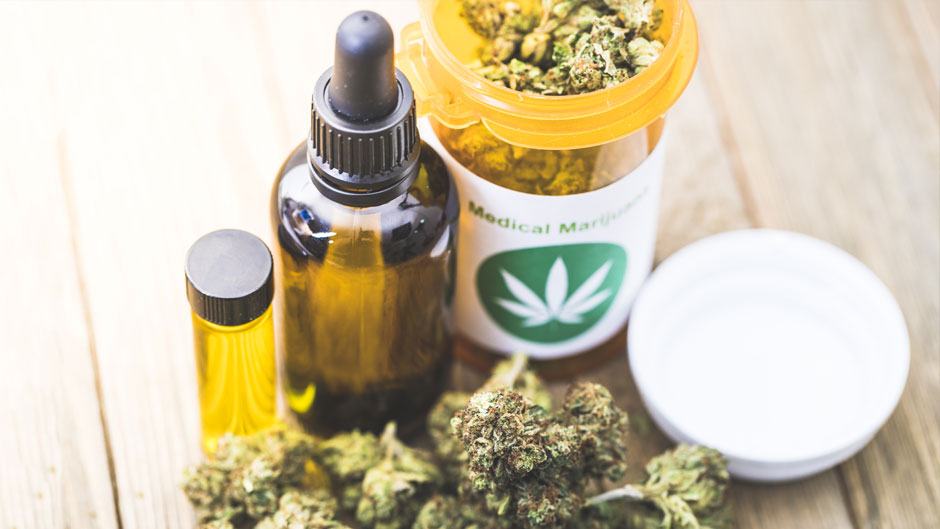Smokable medical marijuana in Florida has gotten the green light.
In an overwhelming vote of 101-11, the Florida House last Wednesday repealed the state’s ban on smoking medical pot, bowing to a demand from Republican Gov. Ron DeSantis that lawmakers do so by March 15. The Senate passed the bill (SB 182) a week earlier.
The bill allows patients to purchase up to 2.5 ounces of marijuana for smoking every 35 days. It bans the smoking of medical marijuana in public places and requires patients under 18 to have a terminal condition and get a second opinion from a pediatrician before receiving the drug.
“I thank the Florida Legislature for taking action on medical marijuana and upholding the will of the voters,” DeSantis posted.
In 2016, about 71 percent of voting Floridians approved a constitutional amendment to legalize medical marijuana. But the bill, which was signed into law by then-Gov. Rick Scott, legalized access to medical marijuana in pill, oil, edible, and vape form only. Smoking the drug was still illegal.
At a press conference held in Winter Park, Florida, earlier this year, DeSantis asked the legislature to repeal the smoking ban by March 15 or he would do so through the courts.
In a prepared statement, Florida Agriculture Commissioner Nikki Fried applauded the passage of the bill, which now heads to the governor’s desk. “Today's action to finally allow smokable medical marijuana brings four words to the lips of people across our state: It's about damn time. I’m thankful for the House and Senate’s work to fix this situation and look forward to the governor signing this much-needed legislation into law. It’s long past due that the state of Florida honored the will of the people and allowed doctors to determine their patient’s course of treatment.”
Medical marijuana is legal in 33 states. But how much does the average person know about marijuana as medicine? How does it work, and which conditions can it treat?
 Denise C. Vidot, an assistant professor in the University of Miami’s School of Nursing and Health Studies, who is conducting extensive research on the use of medical marijuana to manage HIV comorbidities in the context of cardiovascular disease risk, sheds more light on the issue of medical pot in this News@theU exclusive.
Denise C. Vidot, an assistant professor in the University of Miami’s School of Nursing and Health Studies, who is conducting extensive research on the use of medical marijuana to manage HIV comorbidities in the context of cardiovascular disease risk, sheds more light on the issue of medical pot in this News@theU exclusive.
What research have you conducted on medical marijuana?
Currently, collaborators and I are conducting a study on the use of medical marijuana to manage HIV comorbidities in the context of cardiovascular disease risk. HIV is a qualifying condition to obtain medical marijuana in Florida; therefore, there is a portion of HIV patients with an active prescription for medical marijuana. In this study, funded by the National Institutes of Health as a Center for AIDS Research Supplement, we are examining differences in cardiovascular disease risk among patients who have an active prescription for medical marijuana compared to those who use marijuana not prescribed by a health care professional. I also recently completed two other studies on medical marijuana. One examined differences in respiratory and cardiometabolic disease among medical and recreational marijuana users via a population-based sample of adults in the United States. The second study was a qualitative study that sought to examine stigma and perceptions of medical marijuana use by current users and those who have never used marijuana.
What is the difference between medical marijuana and recreational marijuana?
In Florida, the differences include the composition of marijuana, how it is obtained, and the route of administration (until the ban on smokable marijuana was repealed). Marijuana is composed of compounds called “cannabinoids.” The two main cannabinoids that have been studied are cannabidiol (CBD) and tetrahydrocannabinol (THC). In general, medical marijuana contains a high concentration of CBD and a low, if any, concentration of THC. CBD has been associated with the medically beneficial effects, such as reduced inflammation. Recreational marijuana tends to have a high concentration of THC, which has been identified as the psychoactive ingredient causing the “high” feeling. In Florida, patients who obtain legal medical marijuana are typically given a prescription label that lists the proportions of each cannabinoid and ingredient used in the regulated medical marijuana. Since recreational marijuana is illegal, users are largely unaware of the ingredients and cannabinoid ratio of the marijuana they obtain from non-health care professionals. Furthermore, in Florida, medical marijuana is provided in non-smokable form; but that may change now that the Florida House has ended the ban on smokable medical marijuana. Potential legal routes of administration are via pill, oil, tincture, nasal spray, edible, etc. Recreational marijuana is most commonly smoked, although the aforementioned routes of administration can also be used.
What is medical marijuana used for and how does it work?
In Florida, medical marijuana can be prescribed for qualifying conditions such as cancer, HIV/AIDS, epilepsy, glaucoma, post-traumatic stress disorder, ALS, Crohn’s disease, Parkinson’s disease, and/or multiple sclerosis. Licensed physicians are also able to prescribe medical marijuana to patients who have a condition in the same class as the list of qualifying conditions, to patients who are terminally ill, or to patients who have chronic pain related to a qualifying condition. There are various ratios of CBD (cannabidiol) and THC (tetrahydrocannabinol) used within medical marijuana based on the condition. The majority of medical marijuana in Florida contains a higher ratio of CBD than THC, along with terpenes and flavonoids. For example, if an HIV patient is experiencing wasting syndrome, medical marijuana that includes THC can be considered since it has been shown to increase appetite and reduce nausea. Epilepsy patients, for example, may consider medical marijuana with high CBD concentration since CBD has been shown to control epileptic seizures.
Medical marijuana works via cannabinoids (CBD and THC), engaging with the patient’s endocannabinoid system. The body naturally produces cannabinoids; and the endocannabinoid system has been documented to play a role in regulating common processes such as appetite and pain. There are two main cannabinoid receptors found in the body, CB1 and CB2 receptors, to which cannabinoids in marijuana attach and activate. CB1 receptors are found throughout the body (i.e., brain and nervous system). THC typically binds with CB1 receptors, which can be associated with the psychoactive and mental health effects. CBD typically binds to CB2 receptors found in the immune system, which can be associated with reduced inflammatory effects.
How much evidence exists on the benefits of medical marijuana?
Evidence on the benefits of medical marijuana is growing. This is particularly true in oncology, and other fields that include medical marijuana qualifying conditions identified in the states that have legalized its medical use.
Do you see yourself perhaps expanding your academic research in the area of medical marijuana now that it is legal in over 30 states?
Certainly. I am already examining differences in the health impact of marijuana use by route of administration, including various ways to smoke marijuana. Now that Florida has repealed the state ban on smokable medical marijuana, it is even more important to make evidence-based decisions on patient care when deciding on the route of administration.
We’ve heard a lot about the benefits of medical marijuana. But what are the side effects?
There are patients who report side effects after using marijuana. Effects vary as a function of CBD and THC ratio, non-active ingredients, and route of administration. Furthermore, there are limited prospective studies examining the long-term impact of medical marijuana on health outcomes.
What impact do you see medical marijuana having on health care, and could it help solve the opioid crisis?
As marijuana becomes part of the clinician’s “toolbox” to provide care for patients, I believe health care professionals will become more engaged in the marijuana research community. In Florida, medical marijuana has begun to make an impact on pain management. Preliminary results from a Provost Research Award pilot study I conducted found that the majority of patients who use medical marijuana do so to manage pain and/or anxiety. In the context of the opioid epidemic in the U.S., studies have suggested that medical marijuana may be an alternative to prescribing opioids.

